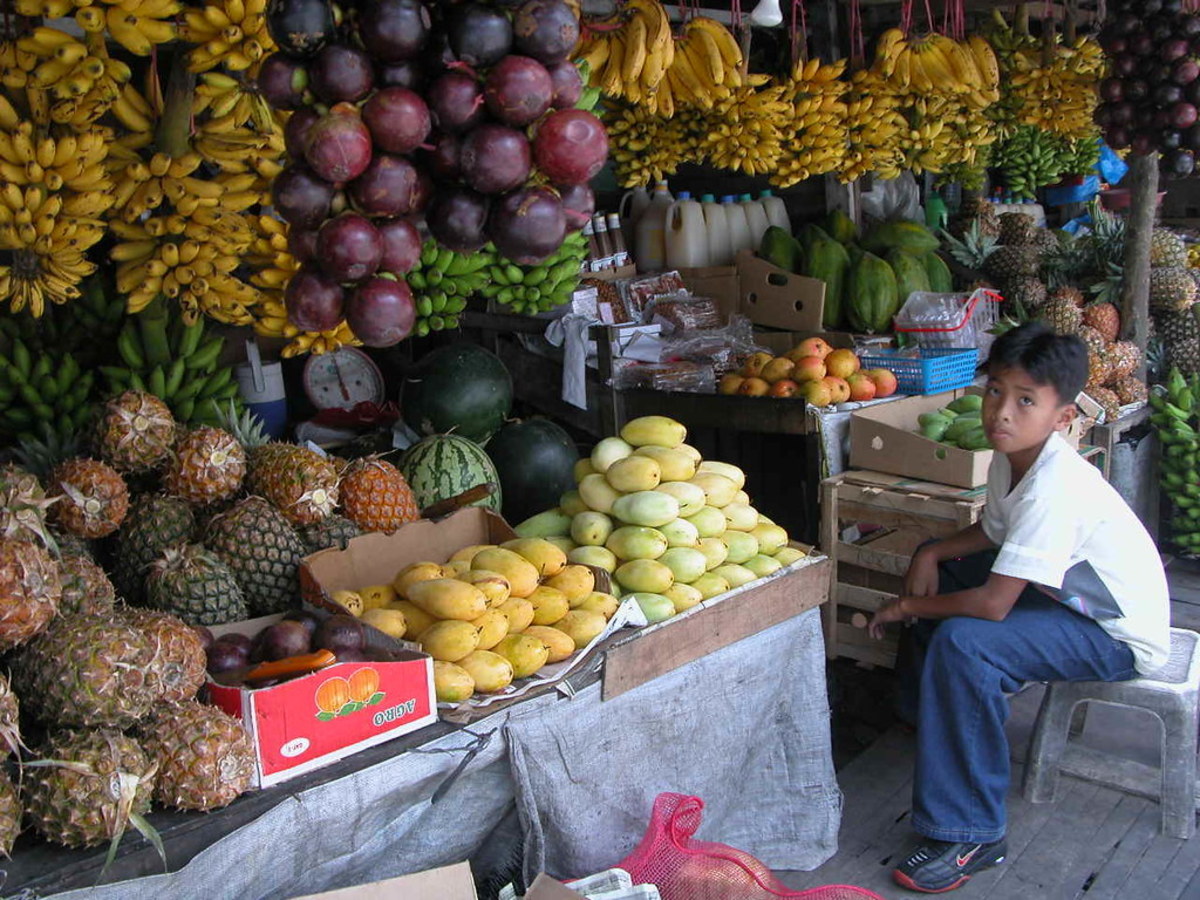- HubPages»
- Food and Cooking»
- Cooking Ingredients»
- Fruit Ingredients
How to Make Mulled Apple Cider
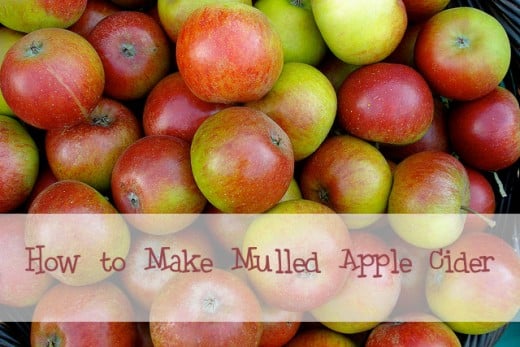
Apple cider is an autumn staple, something that most of us look forward to each Fall. After all, apples are a mark of the season, and the scent of ripe windfalls in the air is a key aroma that we associate with this time of year.
This article will teach you how to make apple cider at home and how to mull it in your crock pot. Enjoy your own, home made apple cider this season and share it with your family and friends!
The process is relatively simple and should produce good results. It's managed similarly to my recipe for making ginger beer at home. Once the cider is produced, you can mull it on the stove or in a crock pot.

Make sure that your food processor is large enough for the task of pureeing apples.
Make Your Own Cider
The first step to making mulled or caramel apple cider is to make the cider. You may skip making your own apple cider and purchase apple cider instead. However, if you purchase your cider, it won't be as fresh and you won't be able to customize the flavor of your apples.
This doesn't require any kind of specialty equipment other than a good food processor (which you probably already have in your kitchen). If you don't have one already, I've recommended a good food processor to the right. You'll want to make sure that you're using something of sufficient size to manage processing apples (which are pulpy and relatively large). The recommended food processor is large enough to manage this task, highly rated, and I love my Cuisinart!
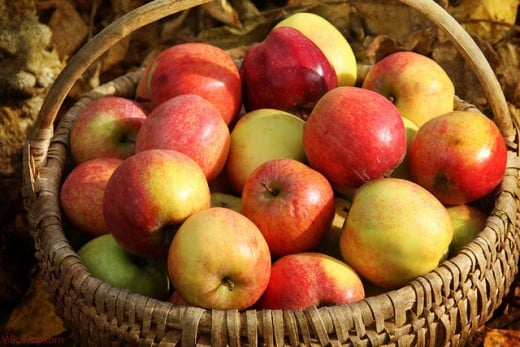
How do you like your cider?
Step One: Choose Your Apples
Any apple can work for apple cider. Whatever you've read, don't limit yourself to one list of apple types. There are thousands (over 7,500 varieties) of species of apple in the world, and you should never limit yourself to what somebody else tells you to use. You should always use what tastes good to you when making apple cider.
I recommend choosing a variety of different apples based on their flavor qualities. Apple cider should be sweet with a bit of a tart bite. If you use more than one variety of apple (recommended!), my advice is to balance the sweet apples with the tart apples. Personally, I love the sweeter varieties, such as red delicious, and yellow delicious, when mixed with a semi-tart variety of apple, such as Gala or McIntosh.
When I was a child, my grandfather made apple cider purely out of McIntosh apples. They work well because they are semi-sweet and retain quite a bit of a tart bite. If you want this type of flavor but can't get McIntosh apples, a mixture of Delicious (red and yellow) and Granny Smith apples should do the trick to balance the flavors.
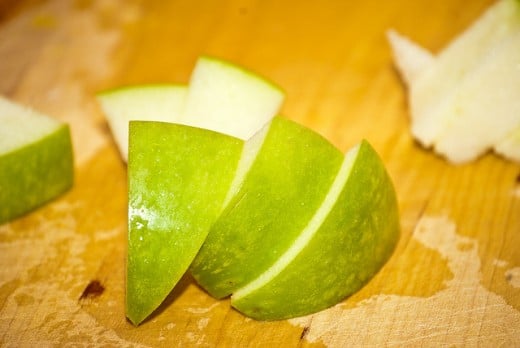
Step 2: Chop Your Apples
The next step is to chop your apples. It's recommended that you leave the peels on your apples in order to obtain the best color for your apple cider and to make sure that you get the most out of the nutrients which are stored in the apple's peel. You should be able to slice your apples into quarters or eighths for the purpose of pureeing them in your food processor.
While you can include the core in your apple puree, I prefer to remove mine when I'm slicing the apples. Either way you choose to do it is up to you, but it's best if you can avoid the seeds.
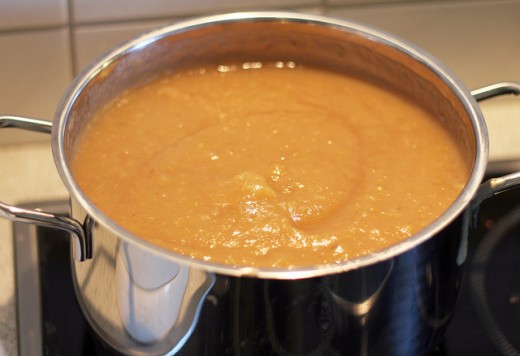
Step 3: Puree Your Apples
Next up, you'll be pureeing your apples. This is the easy part!
It's best if you puree your apples one type of apple at a time. This way you can experiment with a blend of flavors in your apple cider to make sure that you're not getting it either too sweet or too tart for your taste. The beauty of making your own apple cider at home is that you have the benefits of being able to make it to your own personal tastes.
If you puree and strain each apple variety separately, you can mix them afterward and get the best taste and color for your personal tastes.
Step 4: Strain the Puree
The next step in the process is to strain the puree. All you want to get out of it is the thick juice from our of your puree, and you want to leave the pulp behind. This is best accomplished by using a fine cheesecloth and emptying your puree into the cheesecloth and then squeezing it thoroughly in order to get the juice from the puree in your food processor into the mixing pitcher.
As with pureeing, it's recommended that you strain each variety of apple separately so that you can mix them afterward for best results in flavor and color.
Once you're finished straining, you can begin mixing your apple varieties for taste and color. Taste as you go for best results!
Once Your Cider is Mixed, You Can Mull It!
Follow the steps below in order to mull your cider.
- 1 Gallon Fresh Apple Cider
- 1/2 Cup Brown Sugar
- 1 Teaspoon Whole Cloves
- 2 Teaspoon Allspice
- 5 Sticks Cinnamon
- Pour your fresh apple cider into your crock pot and set it on high so that your cider will boil.
- Add brown sugar into the cider in your crock pot.
- Gather your spices into a cheesecloth and tie it shut so that the spices will infuse with the cider.
- Add the spices and cheesecloth into the crock pot with the cider. Let this mixture boil.
- Once the cider is boiling, turn the heat down so that the cider will simmer. Stir this mixture occasionally to infuse the spices with the cider.
- Remove spices from the pot before serving the cider hot!
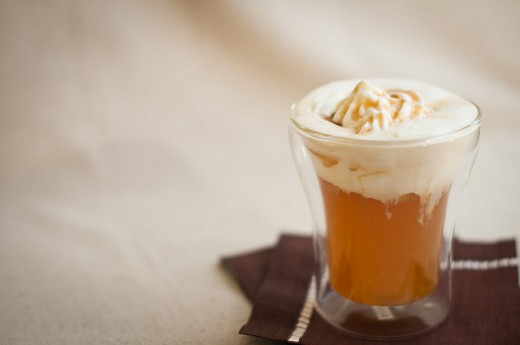
Serving your Mulled Apple Cider
The final step is to serve your apple cider. Make sure that you've removed the spices from the pot, then use a ladle to scoop the hot liquid into handwarmer mugs for best results for fall warming. Have fun!
More Hot Beverages for Autumn Days
- What is the Difference Between Hot Chocolate and Hot Cocoa?
Did you know that hot chocolate isn't the same thing as hot cocoa? Americans often use the two terms interchangeably, but this is confusing to the European and South American audiences. - Romantic Hot Cocoa Recipe for Valentine's Day
What could be more romantic than snuggling down with your honey and a hot cup of spiced hot cocoa? Set yourself up for a sexy and romantic Valentine's Day with hot chocolate! - Caramel Apple Cider Recipe from Betty Crocker
This recipe on Betty Crocker will provide you with everything you need to make delicious caramel apple cider. This can be done using the cider that you made in the beginning part of this article!


